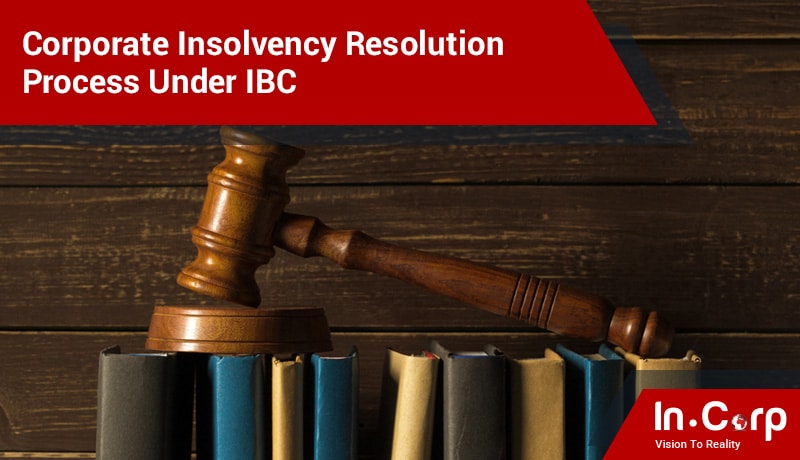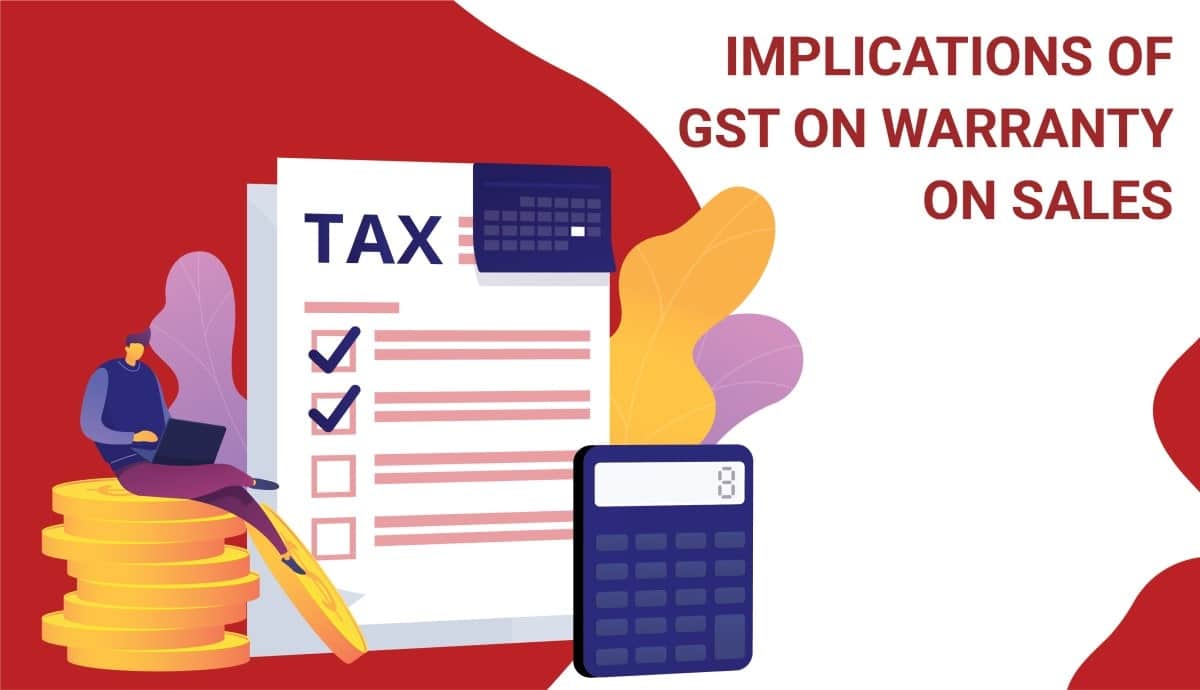Previously, the winding up was dealt with under the Companies Act, 1956 / the Companies Act, 2013. Thereafter, Insolvency and Bankruptcy Code was enacted in the year 2016 which came up with a new process namely the Corporate Insolvency Resolution Process (CIRP). CIRP aims to resolve the defaulting companies in a time-bound manner and maintain the company as a going concern status. The Insolvency Resolution Process for a corporate person is addressed in Chapter I of Part II of the Insolvency and Bankruptcy Code, 2016 (Code).
Some highlights of the Corporate Insolvency Resolution Process (CIRP) as stipulated under the code are mentioned below.
Table Of Contents
What Is Meant By Corporate Insolvency Resolution Process (CIRP)?
Who Can Initiate The Corporate Insolvency Resolution Process?
Consequences Of Initiation Of Corporate Insolvency And Resolution Process
Stages Of Corporate Insolvency Resolution Process (CIRP)
Time Limit For Completion Of CIRP Process
Conclusion
Why Choose Incorp?
What is meant by Corporate Insolvency Resolution Process (CIRP)?
CIRP is the process of resolving the corporate insolvency of a corporate debtor in accordance with the provisions of the Code. The trigger for initiating the CIRP is the ‘DEFAULT’ by the corporate debtor.
The process of insolvency of corporate debtors under the code applies where the minimum default amount is INR 1 crore (INR 10mn). The minimum amount of default for initiating CIRP was originally INR 1 lakh, but the Government vide notification dated 24th March 2020, increased the same to INR 1 crore.
Who can initiate the Corporate Insolvency Resolution Process?
If any Corporate Debtor commits a default, Corporate Insolvency Resolution can be initiated by filing an application before the Adjudicating Authority in the manner as provided under Chapter II of Part II of the Code.
CIRP may be initiated by either:
- a financial creditor (FC) under Section 7
- an operational creditor (OC) under Section 9
- a corporate applicant of a corporate debtor under Section 10 of the Code
Related Read: Pre-Packaged Insolvency Resolution Process for MSMEs
Consequences of initiation of Corporate Insolvency and Resolution Process
When insolvency is triggered under the code, there can be two outcomes: Revival of Corporate Debtor or Liquidation. All attempts are made to resolve the insolvency by either coming up with a restructuring plan or a new ownership plan. If the resolution attempts fail, the company’s assets are liquidated.
The primary aim of the code is to revive and save the CD (i.e, to resolve). Only once the CIRP fails, does the liquidation follow.
Stages of Corporate Insolvency Resolution Process (CIRP)
STAGE I: INITIATION OF CIRP
- The CIRP of a CD commences with an order from the Adjudicating Authority (AA), admitting an application to initiate the CIRP of the CD filed by a financial creditor or an Operational Creditor, or the corporate applicant. The date of this order becomes the insolvency commencement date (ICD).
STAGE II: MORATORIUM AND PUBLIC ANNOUNCEMENT
- Declaration of moratorium under Section 14 of the Code.
- Appointment of an insolvency professional to act as the Interim Resolution Professional (IRP).
- On and from the commencement of CIRP, the control and custody of the corporate debtor is transferred to the hands of the IRP, so appointed and the powers of the board of directors or the partners of the corporate debtor shall stand suspended.
- Public announcement in Form A by the Interim Resolution Professional to invite claims from creditors of the Corporate Debtor.
STAGE III: CONSTITUTION OF COMMITTEE
- Collation, verification of the claims, constitution of the Committee of Creditors, and thereby preparation of the list of creditors.
- Filing of report certifying the constitution of the Committee of Creditors and list of creditors to the Adjudicating Authority.
- Holding the first meeting of the Committee of Creditors within 7 (seven) days of filing the report certifying the constitution of the committee of creditors.
- The committee shall fix the expenses to be incurred on or by the RP and the expenses shall constitute insolvency resolution process costs.
- The Committee of Creditors is the decision-making body of the Corporate Debtor, for the very reason that it is the investment and interest of these creditors which is at stake. Actions taken by the IRP/ RP are to be ratified by the members of the Committee of Creditors.
STAGE IV: APPOINTMENT OF RESOLUTION PROFESSIONAL
- The IRP so appointed may or may not be appointed as the Resolution Professional (RP), and the same is decided upon by the Committee of Creditors in its first meeting.
- The RP shall appoint two registered valuers to determine the fair value and the liquidation value of the corporate debtor in accordance with regulation 35.
STAGE V: POWERS AND DUTIES OF THE IRP/RP
- The IRP or the RP may appoint any professional, in addition to registered valuers to assist him in the discharge of his duties in the conduct of the corporate insolvency resolution process.
- The RP may sell an unencumbered asset(s) of the corporate debtor, other than in the ordinary course of business if he believes that such a sale is necessary for a better realization of value under the facts and circumstances of the case. However, the book value of all the assets sold in aggregate shall not exceed ten percent of the total claims admitted by the IRP.
- The resolution professional shall form an opinion on whether the corporate debtor has been subjected to any transaction covered under sections 43, 45, 50, or 66 of the Code.
STAGE VI: INITIATION OF EXPRESSION OF INTEREST PROCESS FOR SUBMISSION OF RESOLUTION PLAN
- The resolution professional shall publish brief particulars of the invitation for expression of interest in Form G. The public announcement states that the corporate debtor is undergoing an insolvency action and that all interested candidates or bidders are asked to submit a resolution plan that could be chosen.
- The Resolution Professional shall check the eligibility of all the prospective resolution applicants and conduct due diligence.
- The Prospective Resolution Applicant shall submit the resolution plan within the due date prescribed in Form G.
- The plan so proposed must compulsorily deal with payment of the CIRP costs in priority, payment to operational creditors, and management of affairs of the corporate debtor on implementation of such plan. There are also other requirements laid down in provisions of the Code and regulations made thereunder which are required to be complied with.
- RP will check whether the plan submitted by Resolution Applicant (RA) meets the basic criteria of the requirement of the Code.
- The resolution professional shall submit to the committee all resolution plans which comply with the requirements of the Code and regulations made thereunder.
- Thereafter, the committee shall evaluate all the plans, record its deliberations on the feasibility and viability of each resolution plan, and vote on all such resolution plans simultaneously.
STAGE VII: APPROVAL OF RESOLUTION PLAN
- Where the resolution plan is approved by the members of the Committee of Creditors with 66% of votes, the RP shall file an application before the Adjudicating Authority for approval of the plan. Following this, Adjudicating Authority may, upon its discretion, accept or reject the same.
- The resolution plan is implemented and becomes legally operative on the corporate debtor and all parties if the NCLT authorizes it.
- The Tribunal may order the corporate debtor’s liquidation if the NCLT does not approve the resolution plan or it doesn’t receive resolution plan before the expiry of CIRP period.
Related Read: Voluntary Liquidation Under IBC 2016
Time Limit for completion of CIRP process
As per Section 12(1) of the Code, the CIRP shall be completed within a period of 180 days from the date of admission of the application to initiate such process. The Adjudicating Authority may grant a one-time extension of 90 days. The maximum time within which CIRP must be mandatorily completed, including any extension or litigation period, is 330 days.
However, in exceptional cases, the said time limit can be extended even beyond 330 days. The Supreme Court in the matter of Committee of Creditors of Essar Steel India Limited v. Satish Kumar Gupta and Others held that the Adjudicating Authority may extend the timeline for completion of CIRP beyond 330 days in exceptional cases where the relevant litigants could not be held liable for such delay and the said extension is in the interest of all stakeholders.
Conclusion
The Code is an important legislative reform that has strengthened India’s insolvency regime, helped address non-performing loans and increased overall recovery for creditors. The CIRP is a “creditor in control” model of restructuring the CD. This control is exercised through the IRP (and later the RP).
Why choose Incorp?
We at Incorp, have the expertise and skills to guide you and run the entire process of Corporate Insolvency Resolution Process with experienced Insolvency Professionals and their team.
Our professionals offer Corporate Recovery and Corporate Restructuring services under the framework of Companies Act as well as the Insolvency and Bankruptcy Code.



